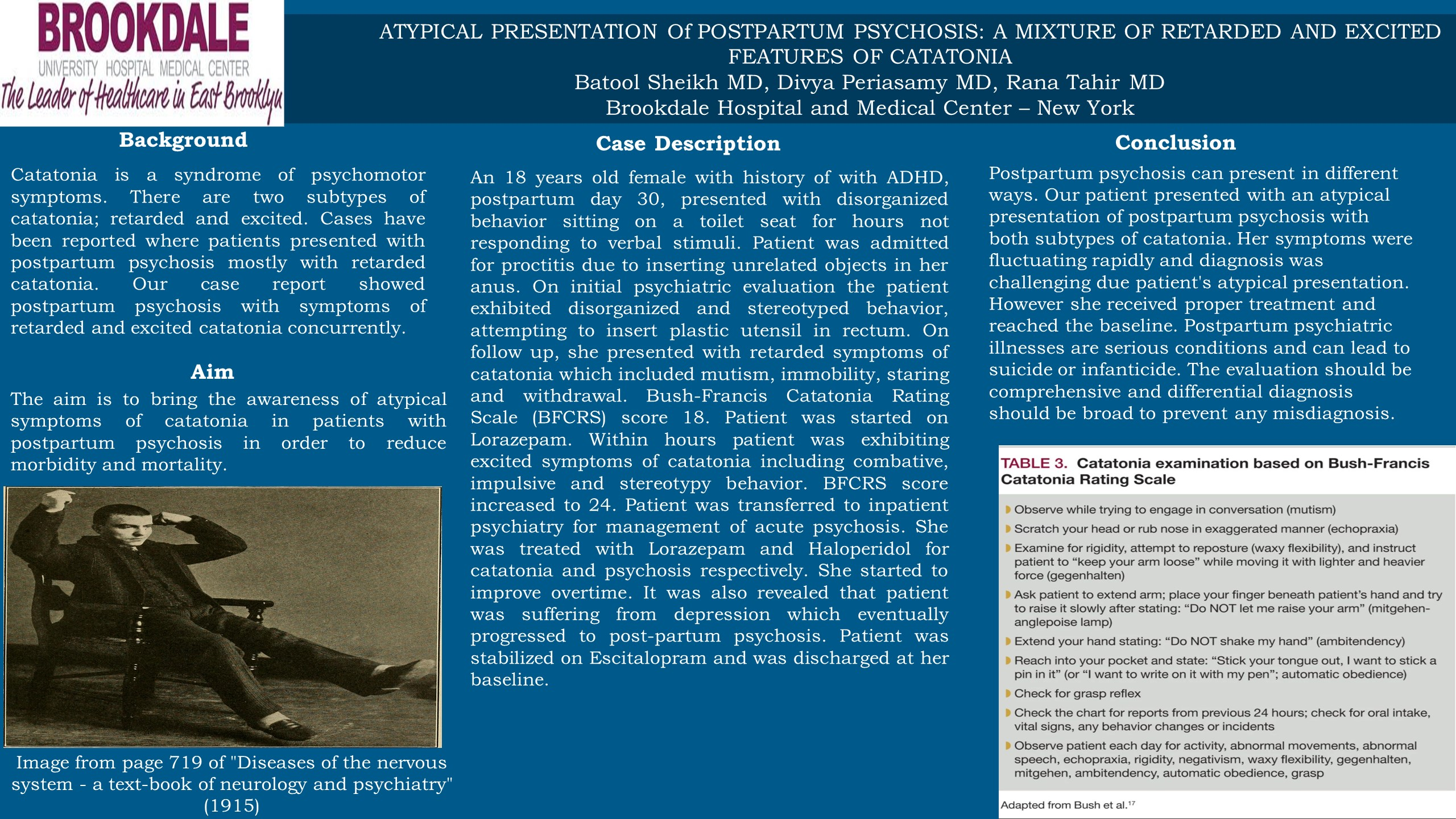Abstract
Title:
Atypical Presentation of Postpartum Psychosis: A mixture of Retarded and Excited Features of Catatonia
Author:
Batool Sheikh, MD, Brookdale University Hospital Medical Center, New York; Divya Periasamy MD, Brookdale University Hospital Medical Center; New York, Rana Tahir, MD Brookdale University Hospital Medical Center, New York
Background:
Catatonia is a syndrome of psychomotor symptoms. There are two subtypes of catatonia; retarded and excited. Cases have been reported where patients presented with postpartum psychosis mostly with retarded catatonia. Our case report showed postpartum psychosis with symptoms of retarded and excited catatonia concurrently.
Aim:
The aim is to bring awareness of atypical symptoms of catatonia in patients with postpartum psychosis in order to reduce morbidity and mortality.
Case Description:
An 18 years old female with a history of ADHD, postpartum day 30, presented with disorganized behavior sitting on a toilet seat for hours not responding to verbal stimuli. The patient was admitted for proctitis due to inserting unrelated objects in her anus. On initial psychiatric evaluation, the patient exhibited disorganized and stereotyped behavior, attempting to insert a plastic utensil in the rectum. On follow-up, she presented with retarded symptoms of catatonia which included mutism, immobility, staring, and withdrawal. Bush-Francis Catatonia Rating Scale (BFCRS) score 18. The patient was started on Lorazepam. Within hours the patient was exhibiting excited symptoms of catatonia including combative, impulsive, and stereotypy behavior. BFCRS score increased to 24. The patient was transferred to inpatient psychiatry for management of acute psychosis. She was treated with Lorazepam and Haloperidol for catatonia and psychosis respectively. Her symptoms continued to have fluctuating episodes of retarded and excited catatonia. She started to improve over time. It was also revealed that the patient was suffering from depression which eventually progressed to post-partum psychosis. The patient was stabilized on Escitalopram and was discharged at her baseline.
Conclusion:
Postpartum psychosis can present in different ways. Our patient presented with an atypical presentation of postpartum psychosis with both subtypes of catatonia. Her symptoms were fluctuating rapidly and the diagnosis was challenging due patient's atypical presentation. However, she received proper treatment and reached the baseline. Postpartum psychiatric illnesses are serious conditions and can lead to suicide or infanticide. The evaluation should be comprehensive and differential diagnosis should be broad to prevent any misdiagnosis.






